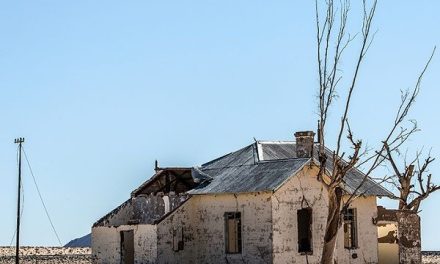
Biltong is not nearly as expensive in Namibia as in South Africa
It may be somewhat premature but going by auction prices at last weekend’s famous annual game fest in Outjo, it seems the high-value game balloon has burst. Not even the most expensive animals came near the multi-million dollar prices fetched by rare game at an April auction near Rustenburg in South Africa.
As I argued last week, high value game is clearly in bubble territory. This one notices by looking at the growth curve of game prices over the past five years. They simply exploded. But there is one structural weakness. The buyers who are all breeders, tend to buy from one another, from one year to the next, so it is only this internal demand, and I suppose a liberal dose of ego, that make buffaloes go for many millions. The moment that demand evaporates, the high price will too. And I suspect that point is very near in the future, as witnessed by the disappointing prices at the local auction.
Granted, last weekend’s auction did not offer any seriously rare animals like rhinos, and for the relatively high price of N$290,000 for female sables, there is a plausible explanation which I have often seen at work at game auctions. If the animal is pregnant, prospective buyers bargain on the fact that soon they will have two animals, for the price of one. Also, just shy of N$300,000 is not that expensive for a breeding sable as the market value is still between N$50 000 and N$150,000 depending on trophy value. So it is reasonable to say the cow will provide an ample return on investment through her ten to twelve year fertile proliferation cycle.
Another feature of the local auction is that roan fetched lower prices than sable although much rarer than the latter. There is a good reason for this underscoring, a point which I also argued last week.
There are only two users of live game products. The first is breeders who hope to make a good return by producing more of the animals that are so expensive. The second is the tourism industry, whether it is for viewing or for trophy hunting. Roans do not make very impressive trophies but sables do. Just imagine what a 72 inch palancas negras on the wall does for the libido.
Furthermore, except for rhino, most of the trophy species can be hunted in a dozen other African countries undermining the exorbitant prices of South Africa.
Fundamentally, it has nothing to do with me what a person with money is prepared to pay for a disease free buffalo. In the end it is his money. But I have a huge problem when speculative bubbles prevent local communities in Namibia from benefitting from high value game.
We are always on the lookout for new and innovative ways to generate income for rural communities. Our community based conservation model is one such example. By making the communities either owners or custodians of the game on their land, poaching has all but disappeared, and critically endangered species like rhino, elephant, and even wild dog, have stabilised and are increasing. Now, let’s expand our model to make provision for the relocation of species of which individuals regularly fetch prices in the thousands and even hundreds of thousands. If we find a philanthropic investor prepared to fork out, say N$5 million to buy the Ondjou or the N#a-Junqa conservancies 20 sables each, then fence off one thousand hectares, and place the animals in the care of the communities, these new breeding herds can provide the communities with income from the animals they sell every year at game auctions. All they have to do is look after them, and this competence has been demonstrated over and over again by the members of the various conservancies. But for this to work, there must be stability in demand as well as price. If the animals cost millions each, the conservancies cannot afford them, and every investor will baulk. If the species is too abundant, the prices too low, the return will be negative. It has to be a selection of very specific species, trading within a rather predictable, but also dependable price range. Then conservancies can add value by doing what they are uniquely qualified to do – take care of their natural resources. The communities must protect them against both predation and poaching, which I am convinced they will do. The only incentive they want is that these animals must generate substantial income for many years to come.
But if rich speculators distort the market, then they spoil the benefits for us all. I do not want to express an opinion on the success or failure of the Outjo game auction, I am only pointing out that rational prices, have re-opened opportunities for local communities to share in the return generated by high value game.









































